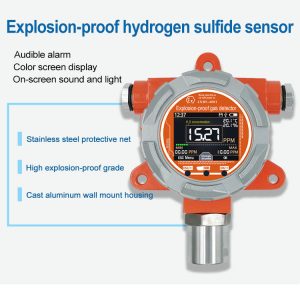The quality of the air we breathe indoors has a direct impact on our health and well-being. With people spending a significant amount of their time indoors, it is crucial to monitor and maintain good indoor air quality (IAQ). Gas sensors play a pivotal role in this process by detecting and analyzing various gases present in indoor environments. This article delves into the significance of gas sensors in monitoring IAQ and explores their applications and benefits.

Understanding Indoor Air Quality:
a. Importance of IAQ: Indoor air quality directly impacts our respiratory health, productivity, and overall comfort. Poor IAQ can lead to allergic reactions, respiratory diseases, headaches, fatigue, and other health issues.
b. Common Indoor Pollutants: IAQ can be compromised by various pollutants, including volatile organic compounds (VOCs), carbon monoxide (CO), carbon dioxide (CO2), ozone (O3), particulate matter, and formaldehyde. These pollutants can originate from building materials, furniture, cleaning products, combustion processes, and outdoor sources.
Gas Sensors in Monitoring IAQ:
a. Gas Sensor Technology: Gas sensors are devices designed to detect and measure concentrations of specific gases. They operate by analyzing gases through chemical or physical reactions and providing real-time data on their presence and levels.
b. Importance of Gas Sensors: Gas sensors enable continuous monitoring of IAQ, alerting occupants to potential health risks and allowing for timely intervention and mitigation strategies. They provide valuable data for assessing pollutant sources and evaluating the effectiveness of ventilation systems and indoor air purifiers.
c. Types of Gas Sensors: Different types of gas sensors are used to detect specific gases. Examples include electrochemical sensors for CO and O3, metal oxide sensors for VOCs, and non-dispersive infrared sensors for CO2. Each sensor type has its advantages and limitations, depending on the targeted gases and application requirements.
Applications of Gas Sensors in IAQ Monitoring:
a. Residential Buildings: Gas sensors help homeowners monitor IAQ, especially in areas with high pollutant concentrations or vulnerable populations such as infants, elderly individuals, or those with respiratory conditions. They provide insights into the effectiveness of ventilation systems and the impact of indoor activities on air quality.
b. Commercial Spaces: Offices, schools, hospitals, and other public buildings benefit from gas sensors for IAQ monitoring. They aid in maintaining a healthy and productive environment for occupants, reducing sick building syndrome symptoms, and preventing potential hazards.
c. Industrial Settings: Gas sensors play a crucial role in monitoring IAQ in industrial facilities where emissions from manufacturing processes can pose health risks to workers. Real-time gas sensing allows for prompt action and ensures compliance with occupational safety standards.
Benefits and Challenges of Gas Sensor Technology:
a. Benefits:
i. Health Protection: Gas sensors contribute to safeguarding human health by enabling timely detection and mitigation of air pollutants, reducing the risk of respiratory illnesses and allergic reactions.
ii. Energy Efficiency: Continuous monitoring with gas sensors helps optimize ventilation systems, preventing unnecessary energy consumption by adjusting airflow rates based on actual IAQ requirements.
iii. Smart Building Integration: Gas sensors can be integrated into smart building management systems, allowing for centralized monitoring and control of IAQ parameters, improving overall building efficiency and occupant comfort.

b. Challenges:
i. Sensor Calibration and Maintenance: Gas sensors require periodic calibration and maintenance to ensure accurate and reliable measurements. Neglecting these tasks can lead to inaccurate readings and compromised IAQ assessment.
ii. Sensor Interference: Cross-sensitivity and interference from other gases or environmental factors can impact the accuracy of gas sensor measurements. Calibration and proper placement of sensors become crucial to minimize interference.
iii. Cost and Accessibility: The cost of gas sensors may be a barrier to their widespread adoption, particularly in smaller residential settings and developing regions. Ensuring affordable and accessible sensor options is essential for promoting widespread IAQ monitoring.
Conclusion:
Maintaining good indoor air quality is vital for our health and well-being. Gas sensors provide valuable insights into the presence and levels of pollutants in indoor environments, enabling effective IAQ monitoring and management. Their applications in residential, commercial, and industrial settings contribute to a healthier and safer indoor environment, reducing the risk of respiratory ailments and improving overall quality of life. Overcoming challenges related to sensor calibration, interference, and cost will further enhance the accessibility and effectiv
 : +86 155 8830 2704
: +86 155 8830 2704 : jxdziot@gmail.com
: jxdziot@gmail.com
